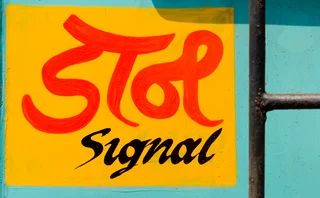
Isda forced to rework year-old standard CSA
Regulation hits key element of landmark collateral contract - but planned revisions will reintroduce settlement risk

The International Swaps and Derivatives Association is reworking a new collateral contract it unveiled just over a year ago, after three different regulatory changes made it too capital intensive for banks to use. The amended contract will remove a form of foreign exchange exposure that is penalised by the new regulations, but will add settlement risk back in – an outcome that shows regulators have their priorities wrong, according to some of those involved in the project.
"The medicine is worse than the ailment," says a risk manager at one international bank, who is part of the working group for the revised standard credit support annex (SCSA), dubbed SCSA II.
The problems centre on a mechanism designed to mitigate cross-currency settlement risk, or Herstatt risk, in the SCSA – a document launched in December 2012 to tackle disputes that had started arising under its predecessor. The SCSA allows counterparties to choose a single 'transport' currency in which to settle their various collateral flows. However, different elements of the new Basel leverage ratio, new rules for the margining of uncleared swaps, and the Basel II credit risk framework, have since combined to deal the SCSA a fatal blow.
"The current version of the SCSA will be inefficient for banks to trade under. So we are working on a new version, which will strip out the current settlement mechanism and replace it with an alternative that is intended to be efficient under the new regulations," says a second source involved in the project.
The new version will ditch the existing settlement mechanism – the implied swap adjustment (ISA) methodology – and require counterparties to physically exchange collateral in each of 17 different currencies. This was one of three options originally considered when the SCSA was drawn up, and was discarded because counterparties worried about Herstatt risk. The ISA methodology was chosen instead as it allowed each counterparty to net the various collateral flows into a single payment in one of the seven transport currencies: Australian dollar, Canadian dollar, euro, sterling, Swiss franc, US dollar or yen.
The medicine is worse than the ailment
"In the original discussions, we were going to settle currency by currency and realised there would be an inherent Herstatt problem. So we looked at various ways of mitigating that risk, and we came up with two solutions: a payment-versus-payment – or PVP – settlement system or the ISA methodology. The PVP solution had not been developed, so we focused on the ISA but we knew some firms weren't overly supportive of the ISA and thought it complicated," says the international bank's risk manager. It was always the plan to replace the ISA, he says – the regulatory changes have simply sped that up.
The first of the regulatory skewers is the leverage ratio contained in Basel III, under which cash collateral can only be used to cut derivatives exposures if it is in the same currency as the underlying swap. Because the SCSA translates collateral payments into a single transport currency, it would only reduce exposures in that same currency, leaving other in-the-money positions counting towards a bank's leverage.
Separately, new uncleared margin proposals published last year by the Working Group on Margining Requirements (WGMR) – a body led by the Basel Committee on Banking Supervision and the International Organization of Securities Commissions – require counterparties to apply an 8% haircut when the currency of the derivatives obligation differs from that of the collateral asset.
The same problem arises under Basel II's standardised approach for credit risk, which has not been amended by Basel III and requires a bank to haircut collateral which is in a different currency to the associated exposure – a step intended to cover possible fluctuations in exchange rates. The standard haircut is 8%.
But while SCSA II might be more efficient from a regulatory perspective, it reintroduces the old problem of settlement risk. In effect, critics say, the rules are forcing users of the agreement to assume Herstatt exposure instead of the risk of a correlated counterparty default and decline in the value of received collateral.
"Removing the risk of the collateral declining relative to the exposure – because of a forex move at the point of default – is just silly, if it means everyone having to take on intra-day settlement risk every day," says the risk manager.
But despite the move to adopt a new version of the SCSA, sources involved in the project say the original document may still have a role to play, especially for counterparties that prefer not to physically settle in some currencies.
The SCSA was originally drawn up in an attempt to eliminate valuation disputes arising from the optionality embedded in existing CSAs – in particular, the ability for counterparties to decide their own list of eligible collateral. That became a big issue when dealers realised the rate used to discount a trade's future cashflows should be determined by the collateral posted – a reasonably straightforward problem in CSAs that specify a single collateral type or currency, but almost insoluble in cases where a counterparty has the right to choose from a menu of different collateral at any point during the life of the trade.
Most dealers agree the correct discount curve should be based on forecasts of the cheapest-to-deliver collateral, as a rational counterparty would look to post whatever asset is cheapest for them. But that may change over time and discrepancies have emerged in how banks approach this.
The standard CSA was meant to eliminate many of these problems by removing the optionality. This is achieved by allocating every trade to one of 17 currency silos, based on the currency of the underlying transaction. Counterparties will only be allowed to post cash collateral in that currency.
Two big dealers – one of which was Goldman Sachs – began trading under the new document at the end of 2012. Further take-up is understood to have been limited.
Only users who have a paid subscription or are part of a corporate subscription are able to print or copy content.
To access these options, along with all other subscription benefits, please contact info@risk.net or view our subscription options here: http://subscriptions.risk.net/subscribe
You are currently unable to print this content. Please contact info@risk.net to find out more.
You are currently unable to copy this content. Please contact info@risk.net to find out more.
Copyright Infopro Digital Limited. All rights reserved.
As outlined in our terms and conditions, https://www.infopro-digital.com/terms-and-conditions/subscriptions/ (point 2.4), printing is limited to a single copy.
If you would like to purchase additional rights please email info@risk.net
Copyright Infopro Digital Limited. All rights reserved.
You may share this content using our article tools. As outlined in our terms and conditions, https://www.infopro-digital.com/terms-and-conditions/subscriptions/ (clause 2.4), an Authorised User may only make one copy of the materials for their own personal use. You must also comply with the restrictions in clause 2.5.
If you would like to purchase additional rights please email info@risk.net
More on Markets
EU bonds favoured over swaps as hedge for European debt
Hedge funds are increasingly using the bonds to hedge Bunds and OATs as swap correlations decline
Canada benchmark shaken by T+1 hedge fund influx
Shortened settlement cycle swept hedge fund trades into Corra, making the rate more volatile
Basis swaps surge amid US repo concerns
Fed funds-versus-SOFR swap volumes nearly quadruple as declining Fed reserves impact funding rates
India delays initial margin go-live date
RBI communicated putting off initial margin rules one day before planned November 8 implementation
Clearing bottlenecks blamed for muted volumes at FMX
Regulatory hurdles and market conditions have also hampered CME rival since its September launch
JPM sees upside in blurring lines between QIS and SMAs
Hedge funds are combining their strategies with bank indexes to create new products
Hedge funds take profit on vol trades with Trump win
FX volatility drops sharply as positions unwind; rates market sees mixed reaction
Shanghai Clearing House urged to take bond collateral for FX trades
Dealers complain that feeble interest rate paid on cash margin raises cost of clearing







